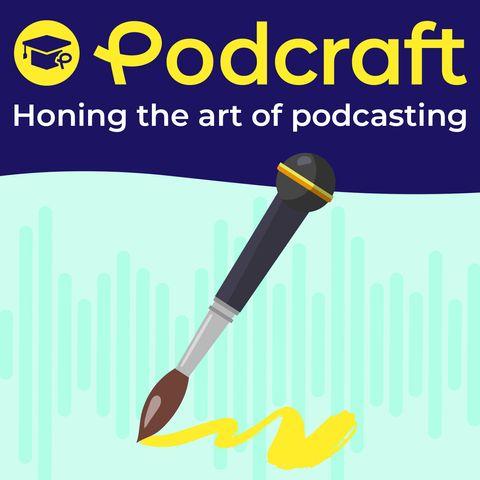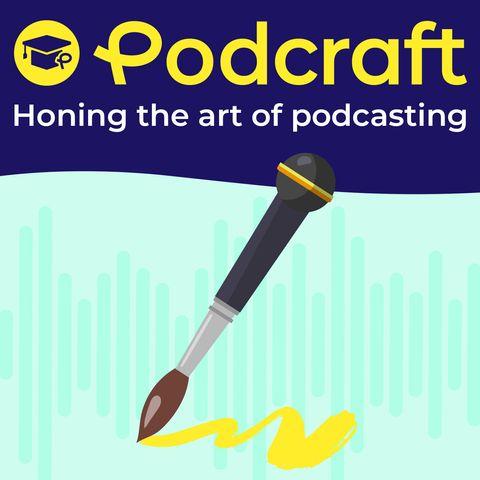
Podcast by Alitu via The Podcast Host

Podcast by Alitu via The Podcast Host

12 January 2026
Can you legally use music, TV clips, or radio audio in your podcast, or is it a fast track to takedowns and trouble?
In this episode, we unpack how copyright actually works for podcasters. What fair use really means, why it is a legal defence rather than permission, and where creators most often get caught out. We look at the practical risks, including automated copyright detection, platform removals, and takedown requests from rights holders.
A quick note before you listen: we are not lawyers. This episode is based on our experience and understanding of how copyright is applied in practice, not legal advice. If you plan to rely on a fair use defence, you should understand the risks involved and make that call deliberately.
Our conversation also widens into modern podcasting workflows. We discuss why video podcasts still need to work as audio-first shows, how many “video listeners” are actually listening in the background, and how relying on visuals can quietly break the experience for most of your audience.
Mentioned
Podcraft is brought to you by Alitu and The Podcast Host
00:00
47:41

05 January 2026
Almost all the benefits of podcasting stem from one thing – and that’s consistency. If you publish quality content over a prolonged period of time, you eventually hit a critical mass of episodes you can now call your “back catalogue” – and it’s a powerful tool.
On this episode of Podcraft, we’re going to look at the benefits of this published body of work, which includes the ability for new listeners to binge your content, as well as providing you with a tonne of repurposing options, too.
Following up on our previous episode, From Doubt to Determination, we’ll also continue to explore the barriers and challenges our Indiepod Legends have faced, as well as how they’ve overcome them. It’s another value-packed programme filled with lessons, takeaways, and motivating anecdotes!
The Podcasts
Podcraft is brought to you by Alitu and The Podcast Host
00:00
49:01

29 December 2025
We test your podcasting knowledge in a series of quizzes and challenges. Along the way, we tackle industry stats, listener behaviour, gear trends, and a mix of real and not-so-real podcasts, while reflecting on the numbers and themes that shaped podcasting over the past year.
Podcraft is brought to you by Alitu and The Podcast Host
00:00
54:14

22 December 2025
Are you using AI to sharpen your thinking, or quietly letting it replace it?
Can podcasters and creators still work with AI without losing the slow, human thinking that makes ideas worth sharing? We talk about using AI as a sounding board rather than a generator, why “thinking walks” still matter, and how convenience can flatten creativity if you are not careful.
There are practical lessons, too. We cover how to handle co-hosted interviews without talking over each other, what changed after a recent home studio move, including audio and lighting choices, and details of a new podcast launch challenge aimed at getting shows live in January.
Mentioned
Colin's Video Lighting (Affiliate Links)
Podcraft is brought to you by Alitu and The Podcast Host
00:00
44:37

15 December 2025
Imagine a podcaster who has been publishing for a couple of years. Every time they check their stats, the number is the same.
They assume they have hit a plateau.
So they spend more on marketing. They push harder on promotion. Nothing changes. The number stays flat.
What that number does not show is what is happening underneath. New listeners are finding the show. At the same time, existing listeners are drifting away. Growth and churn are cancelling each other out.
The show is moving. The metric makes it look stuck.
In this episode, we're joined by Dan Misener from Bumper to unpack why download numbers can be misleading, and what better signals actually tell you how your podcast is performing. We also tackle churn head-on. If new listeners are finding your show but not sticking around, we look at what might be driving that drop off and what you can do to change it.
Podcraft is brought to you by Alitu and The Podcast Host
00:00
40:12

08 December 2025
Fiction podcasts often hold listeners for longer than non-fiction shows. But what can non-fiction creators learn from this?
We break down the simple storytelling tools that keep audiences hooked, including open loops, stronger intros, clearer arcs, and themed seasons. We also highlight some easy wins that improve retention, such as smoother transitions, cleaner audio, and titles that set clearer expectations.
We then dive into a detailed review of a history and policy podcast and explore the lessons it offers for growth. Naming clarity, smarter show notes, and better use of a back catalogue all come up as high-impact opportunities. We also look at ways to reach more listeners through collaborations, community spaces, news-reactive episodes, and in-app promotion. The thread throughout is simple. Strengthen retention first, then build reach with structure, consistency, and relevance.
Mentioned
Podcraft is brought to you by Alitu and The Podcast Host
00:00
44:20